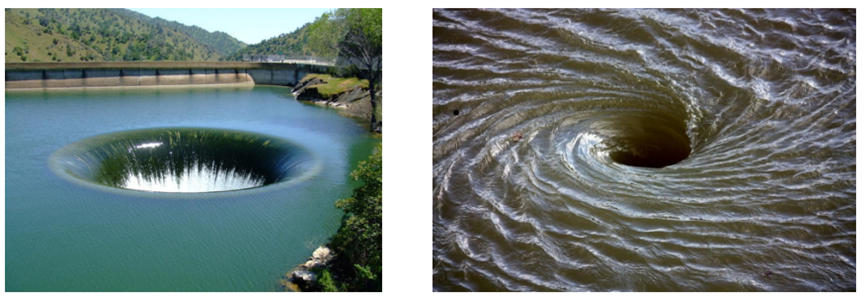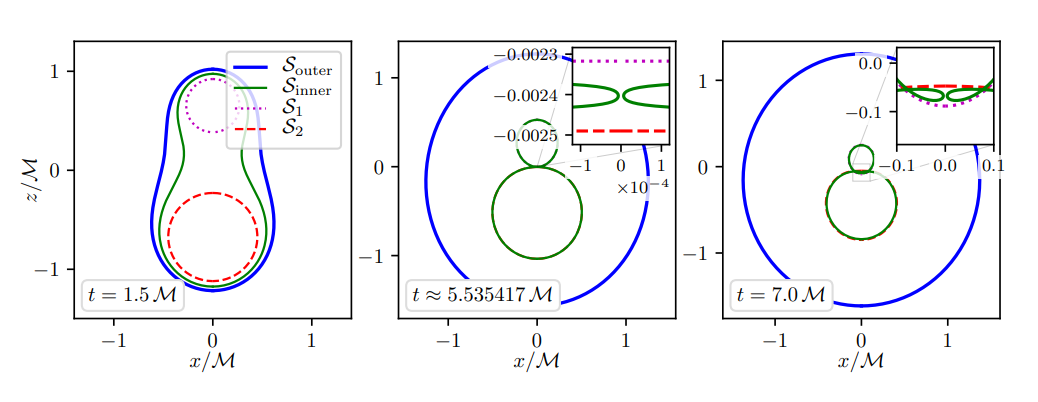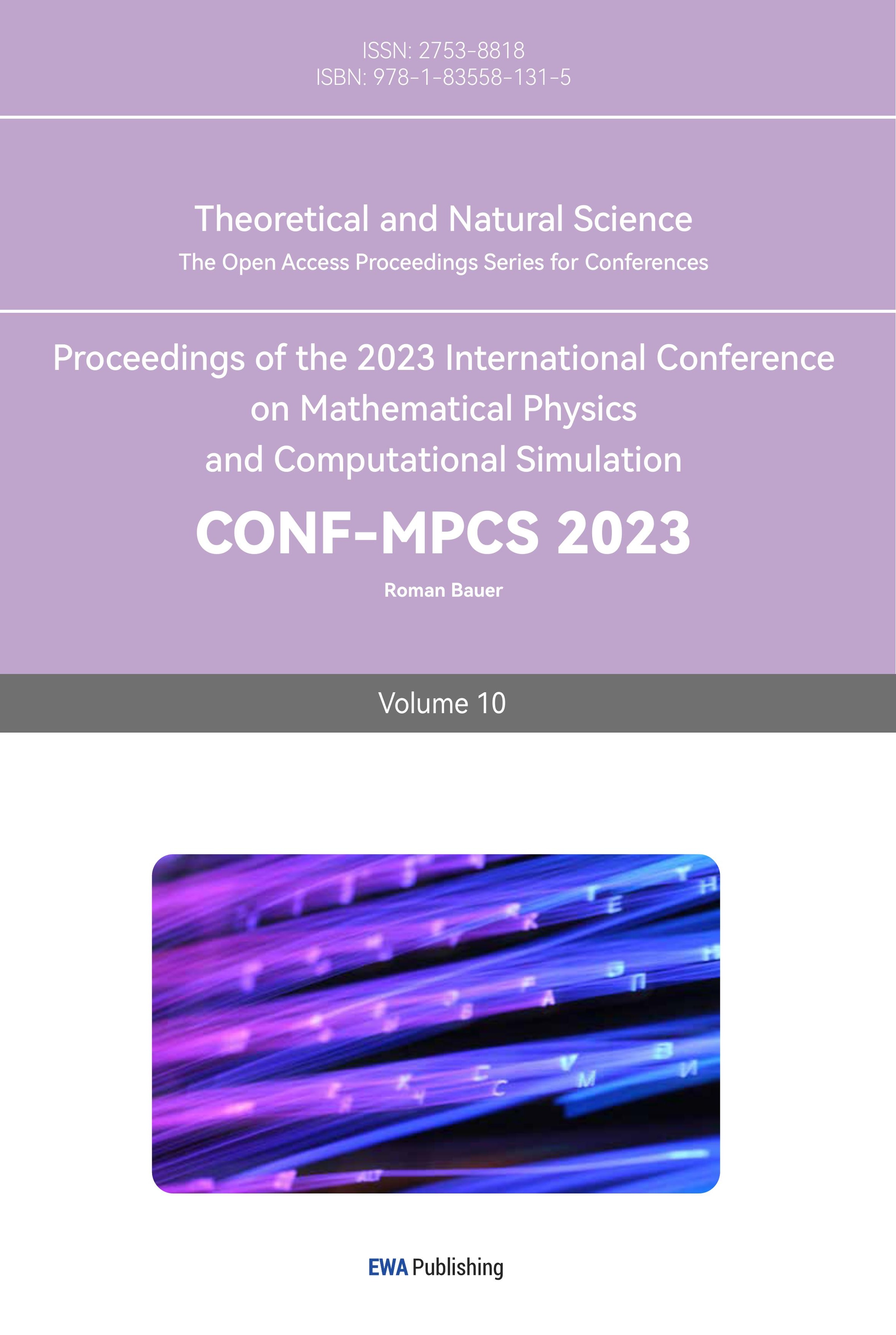1. Introduction
In 1916, the concept of the black hole (so-called “frozen star” at that period) existence was first proposed by theoretical physicist Albert Einstein along with general relativity and Einstein equations’ solutions for general relativity near a single spherical mass proposed by Schwarzschild. Followed by decades of questioning that a black hole is merely a theoretical object [1]. The first black hole that humans discovered, Cygnus X-1, is located in the Swan. One of the brightest X-ray sources is discovered by astronomers at Cygnus X-1 in a 1964’s short rocket flight [2]. Then, in 1974, Stephen Hawking introduces the theory of Hawking radiation, which indicates that black holes will slowly evaporate until they explode. In 2008, the Event Horizon Telescope releases an early result to the world. In 2019, the first picture of a black hole by the EHT is of the one within Galaxy M87 [3]. Researching black holes is a significant topic in several different aspects. For one thing, it can convey information about related galaxies. For another thing, black holes can test for fundamental theories explaining how the Universe works on the macro and the micro scales [4].
Mergers of binary black holes are a common form of black hole merger consisting of two black holes that orbit around each other. Over time, these black holes get closer and closer until they eventually merge into a larger black hole. At present, the black hole merge and its detection is a topic with large potential and research value. Using the technology of VLBI, humans can construct the EHT and get access to the image of black holes. The EHT can resolve objects about 4000 times better than the Hubble Space Telescope thanks to this degree of precision, which enables people to perform more precise research on the exploration of the universe. At present, many research institutions around the world are involved, and a huge observation network has been established.
Black hole mergers and their detections at present is a topic of great potential. This article aims to provide general information on black hole mergers and the state-of-art of detections to its reader. It is a summary of present knowledge and the result of this phenomenon. In this article, the topic of Black Hole Mergers and the State-of-art of Detections will be explained and analysed in several aspects. The article starts by focusing on the definitions and classifications of black holes, and then shifts to the process of merging black holes and the gravitational waves generated. In the last section, the articles focus on current technology of detection and the limitations and future outlooks with it.
2. Definition and types of black hole
Black holes are cosmic objects that have such a strong gravitational pull that nothing. A typical sketch of the process is presented in Figure 1 [5]. The singularity is surrounded by a boundary called the event horizon, which marks the point of no return for anything that crosses it.

Figure 1. Life cycle of stars.

Figure 2. “Un-seriously” Schwarzschild (left) & Kerr (right).
Black holes Black holes (BHs) are prevalent throughout the universe, occurring in various sizes. In our galactic vicinity and several nearby galaxies, there are numerous known stellar-sized BHs that have masses ranging from 3–30 times that of the Sun. These BHs are the remnants of core collapse that occurs during type-II supernovae (SNs), and they originate from the massive progenitors of at least 20 or potentially even 30 times the Sun's mass. These objects are typically found in binary systems that are also potent X-ray sources, which is likely the outcome of the BH's accretion process [6]. Supermassive black holes (BHs) that are active and situated in galactic centers have been acknowledged since the early identification of Quasars in the 1960s. These BHs possess masses exceeding a million times that of the sun and sizes ranging from millions to billions of kilometers in diameter [6].
Mathematical formulae are used to describe the properties of black holes and the behaviour of matter in their vicinity. The Schwarzschild solution is used to describe non-rotating black holes, while the Kerr solution is used to describe rotating black hole, presenting in Figure 2.
The Schwarzschild solution describes the curvature of space and time for a non-rotating situation as the following formula:
\( d{s^{2}}=-(1-\frac{2GM}{r})dt_{s}^{2}+{(1-\frac{2GM}{r})^{-1}}d{r^{2}}+{r^{2}}d{Ω^{2}} \) (1)
It can be used to calculate the size of the event horizon and the strength of the gravitational pull [5].
The Kerr solution, on the other hand, can be described as:
\( d{s^{2}}=fd{t^{2}}-\lbrace h(d{z^{2}}+d{ρ^{2}})+\frac{{ρ^{2}}d{ϕ^{2}}}{f}\rbrace \) (2)
Here, ds is an infinitesimal distance between two points in spacetime; dt and dф are infinitesimal time and angle intervals respectively; dr and dὨ are infinitesimal radial and polar angle intervals respectively; a is the angular momentum per unit mass of the black hole; M is the mass of the black hole. However, using mathematical formulas to study black holes is not without its challenges. The extreme conditions near a black hole, such as the strong gravitational pull and intense radiation, make it difficult to gather accurate data and test theoretical models [7].
 Figure 3. The shapes of black holes based on simulations.
Figure 3. The shapes of black holes based on simulations.
3. Black hole merger and gravitational wave
Binary black hole mergers are a common form of black hole merger consisting of two black holes that orbit around each other. Over time, these black holes get closer and closer until they eventually merge into a larger black hole. The two black holes draw closer and emit gravitational waves as they spiral toward each other. As they draw nearer, their orbit quickens, and they emit stronger radiation. The gravitational waves they emit are characterized by a distinct "chirp" signal, which is detectable by gravitational wave observatories such as LIGO. Finally, during the ringdown stage, the newly created black hole stabilizes into its final state and gives off a sequence of damped gravitational waves [8-11].
This process can be further illustrated by this article [11]. The article discusses the interior of a binary black hole merger and how it can be studied using numerical simulations as presented in Figure 3. The authors use a new method to track the apparent horizon of the black holes during the merger process. They show that this method can be used to study the properties of black holes and their merger. In simpler terms, the article explains how scientists can study black holes that merge using computer simulations. They have developed a new way to track the black holes during this process which helps them understand more about how black holes behave and interact with each other. This process releases a large amount of energy and produces strong gravitational waves. When two black holes merge, they produce gravitational waves that ripple through space-time. These waves are detected by gravitational wave observatories such as LIGO.
The correlation between the magnitude of black hole mergers and the intensity of the gravitational waves they generate is that the more massive the black holes that participate in the merger, the more powerful the gravitational waves they emit. This is due to the fact that when two black holes merge, they generate energy in the form of gravitational waves, and the amount of energy released is directly proportional to the mass of the black holes involved in the merger. The discovery of this trend was made by a team of scientists who detected gravitational waves from a binary black hole merger using LIGO [10]. This relationship between black hole mergers and gravitational waves is an area of active research. Previous scholars used data from the LIGO to detect gravitational waves emitted by the merger of two black holes [8]. In conclusion, these studies demonstrate the importance of understanding the relationship between black hole mergers and gravitational waves to better understand our universe.
4. Blackhole observation: EHT
In 2019, Astronomers announced the first direct view of a black hole at a press briefing on April 10 in front of a large audience. Using observations made with the Event Horizon Telescope of the galaxy M87's nucleus, researchers have obtained the first diagram of the black holes [12]. The black hole in the photograph is 6.5 billion times more massive than the Sun, and it is seen as a brilliant ring produced as light is bent by strong gravity [12]. In reality, the EHT is a global cooperation, not a single telescope [13]. The goal of the project is to enable imaging of nearby supermassive black holes [13]. It didn't start operating in its entirety until April 2017 [13]. Black holes were posited to exist and to be among the most extreme events in the universe about a century ago [13]. Since then, astronomers have attempted to directly examine a black hole’s surroundings, but doing so demands a telescope with an extremely high angular resolution that must match the black hole's size (called the event horizon in technical terms) [13]. Hence, researchers started a cross-over collaboration.
To build a massive telescope, they planned to connect all of the radio telescopes on Earth.[13] The key to the success of radio telescopes is a technology called VLBI, which connects the world's radio telescopes into a large network. Whenever an item is observed by every telescope in the world at once, an image captured by a massive telescope is produced. Therefore, each telescope must be highly synchronized. According to the research, the radio telescope has a range of just a few hundredths of millimetres and employs an atomic clock that is synced to the GPS time standard.[12] The EHT can resolve objects about 4000 times better than the Hubble Space Telescope thanks to this degree of precision [12]. At present, many research institutions around the world are involved, and a huge observation network has been established, with the Shanghai Astronomical Observatory and the Xinjiang Astronomical Observatory in China being among the participants [13]. The Shanghai Observatory's 65-meter radio telescope is one of the world's most comprehensive radio telescopes [13]. Black holes are inherently mysterious and exist in advanced theories. This means that humankind's quest for black holes is one step further [13, 14].
5. Limitations & future outlooks of EHT
However, there are also plenty of limitations that focused on the black hole. Since the original publication of Hawking's 1975 paper, the black hole information problem has been challenging [15]. AdS/CFT solved the paradox by discovering AdS/CFT [15]. Recent events, however, show that there is still much that we do not comprehend, as demonstrated by the firewall puzzle [15]. In contrast, discussions about firewalls have resulted from attempts to use quantum entanglement to recover information [16]. Amid all this confusion, due to certain 'undesired properties' of these kinds of objects, the possibility still needs further exploration [16]. In this case, Remnant is still a candidate final state for Hawking evaporation to occur.
6. Conclusion
To sum up, Black hole mergers are fascinating astronomical phenomena that occur when two black holes gradually merge as they rotate and approach each other. This phenomenon is caused by explosive gravitational waves that propagate through space until they are detected. BHMs are an extremely powerful source of GWs that can help us better understand the nature of the universe. Using the technology of VLBI, humans can construct the EHT and get access to the image of black holes. The EHT can resolve objects about 4000 times better than the Hubble Space Telescope thanks to this degree of precision, which enables people to perform more precise research on the exploration of the universe. At present, many research institutions around the world are involved, and a huge observation network has been established. Looking ahead, this paper finds that although humans have taken the first-ever photos of the apparent boundaries of black holes, there are still limitations to black hole detection. In future research, we delve into the formation and evolution of black holes to reveal more about their mysteries. In addition, scientists should explore the interaction of black holes with other celestial bodies, which will help us to better understand galaxy creation and development and provide novel perspectives for the development of cosmology.



